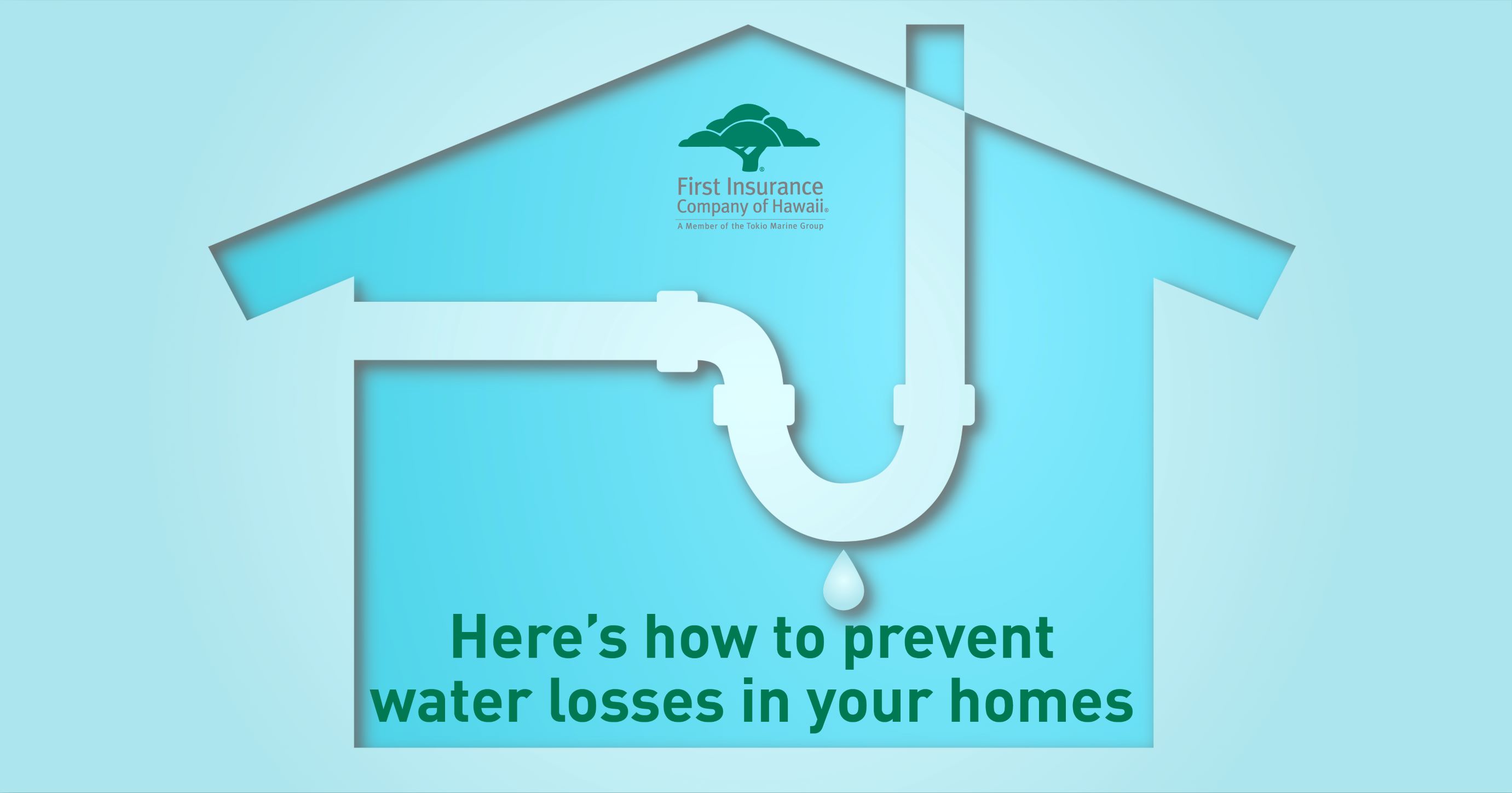Did you know that water damage, not fire, is the leading cause of loss for homeowners in Hawaii? Compounding the issue is the advanced age of many Hawaii homes and condominiums, where failure to repair aging or compromised plumbing fixtures for supply and waste lines can lead to devastating losses.
We've all heard horror stories about homeowners returning from work, or worse yet vacation, to find their home flooded due to a ruptured water hose or overflowing toilet. In condos, where a water loss may not only destroy your property but the property of those who live below you, there's also a large liability exposure.
Repairing water damage is expensive and time consuming. Fortunately, there are preventive measures homeowners can take to avoid water damage incidents.
Look for leaks.
Check your home for any signs of leaks, including musty odors, on ceilings, walls, floors and near appliances that use water. Periodically check water hose connections that run to washing machines, icemakers, dishwashers, toilets, sinks, water heaters, and other appliances that use water. Have a licensed plumber conduct inspections of plumbing fixtures, appliances connected to water lines, and drain lines, and conduct repairs as needed.
Repair leaks.
If you discover a leak, cracked or bulging supply hoses, or rusty water supply valves that are difficult to turn off and on, hire a plumber immediately to replace the necessary equipment.
Water damage can cause major losses.
How much damage can a little water do? A lot, actually. Wood and drywall can rot. Metal can rust. Carpet, furniture and personal belongings can be ruined. And if the moisture isn’t completely removed in time, mold and mildew can flourish, turning your home into a toxic environment.
According to the Insurance Information Institute, about one in 50 insured homes has a property damage claim caused by water damage or freezing each year. The average claim cost was $10,849.
Remain vigilant: Water threats never end.
Using a water loss prevention checklist twice a year is a good start, but it’s not enough. Water issues can strike at any time, and it doesn’t take long for a small problem to grow into a big one. In addition to regular inspections, keep a constant eye out for issues and fix them immediately. Here are three clues that something could be wrong:
- Sounds: That little drip, drip, drip isn’t just annoying. It can cause big trouble if it’s not fixed immediately.
- Changes: Have you noticed condensation, water stains, warped flooring, warped drywall or a musty odor? What about moist, cool spots on your floor or an accumulation of salt deposits on your stone surfaces? You could have a leak.
- Water bill: Watch out for an increase in your water bill and monitor your water meter for unexpected increases or water usage when you’re not running water.
Even with these preventive efforts, you may someday face a water loss. If you do, you may need to shut off the water to contain the damage. Many condos use shared water systems. Know where the water shut off valve is in case of an emergency, as well as how to get permission to shut off water for repairs.
Finally, be sure to update your homeowners or renters insurance policy each year to ensure your coverage is robust. Contact your independent agent to learn more.

